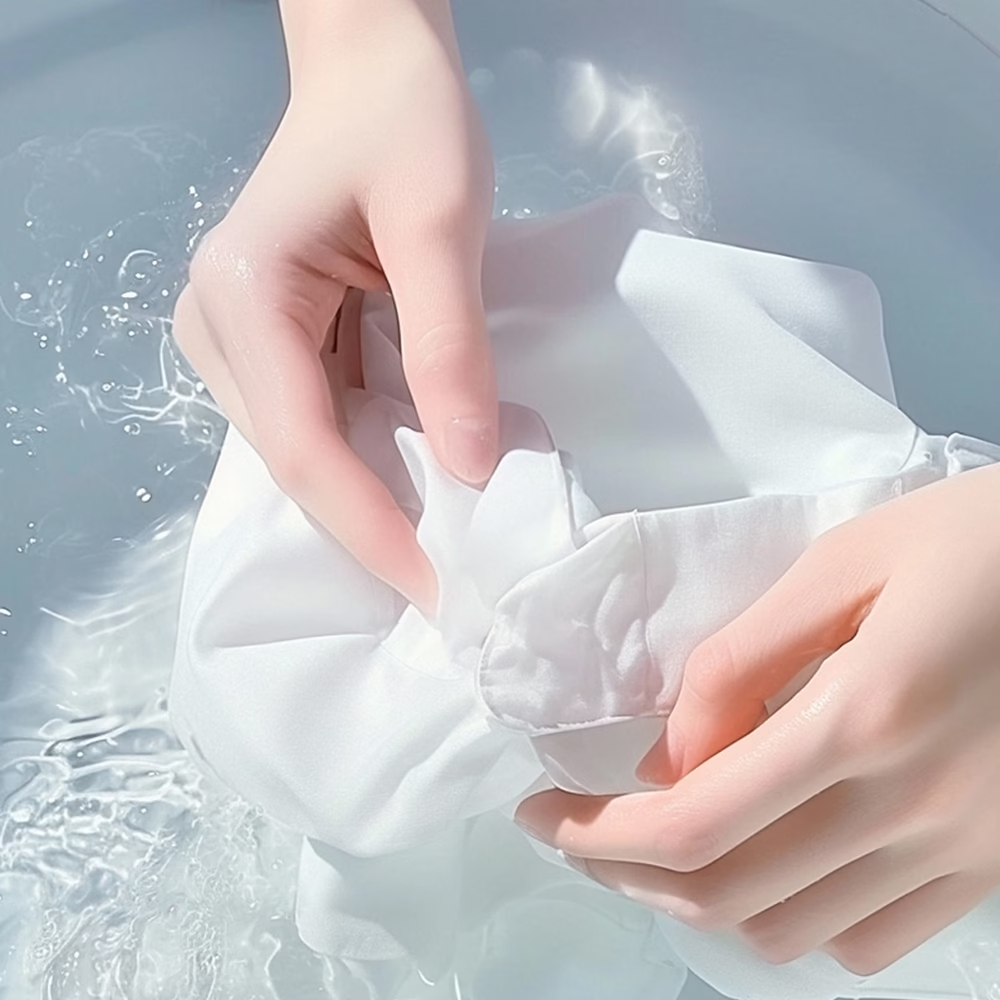As a clothing exporter who’s fielded endless “why did my sweater shrink?!” complaints over 10 years, I’ve learned: most laundry “knowledge” is outdated—or plain wrong. Shoppers blame poor quality, but 80% of fabric damage stems from misusing care routines. Let’s unravel the myths, fix the mistakes, and keep garments looking new—for years.

Myth #1: “Hot Water = Cleaner Clothes”
Reality: Heat destroys more than it cleans.
- Why it’s bad: Cotton shrinks at >40°C; wool fibers fuse at >30°C; synthetic blends (polyester/spandex) leach microplastics when boiled. Even “color-safe” detergents struggle in hot water—they strip dyes faster.
- Fix:
- Delicates (silk, lace): Cold water (≤20°C).
- Stains (grease, grass): Warm water (30°C) + pre-treatment.
- Whites (cotton/linen): Hot water (40°C) only if no elastic or prints.
Client case: A boutique ordered 500 merino wool sweaters. 20% returned shrunken—because their staff washed them in 60°C water. Switching to cold-water cycles fixed it.
Myth #2: “Fabric Softener Protects All Fabrics”
Reality: It’s a silent killer for performance wear and technical textiles.
- Why it’s bad: Softeners coat fibers with waxy residues. This:
- Clogs moisture-wicking layers (athletic wear loses breathability).
- Weakens spandex/elastane (leggings sag faster).
- Stains silk/wool (buildup turns fabrics stiff and dull).
- Fix:
- Athletic/sportswear: Skip softener; use vinegar (1/4 cup) in rinse cycle to refresh.
- Silk/wool: Air-dry with a cedar block—naturally repels moths and softens.
- Towels: Use baking soda (½ cup) instead—softens without residue.
Myth #3: “Wash Labels Are Just Suggestions”
Reality: Those symbols? They’re legal requirements. Ignoring them risks returns—and your brand’s reputation.
- Critical details to check:
- A triangle with an X? No bleach—even “color-safe” formulas can fade.
- A square with a circle? Tumble dry low only—high heat melts trims/glues.
- Hand wash icon? Machine agitation tears delicate trims (beaded dresses, embroidered jackets).
- Pro tip: For export clients, include care cards in local languages. Reduces “how to wash this?!” complaints by 60%.
Myth #4: “Drying Flat = No Stretch”
Reality: It depends on the fabric’s “memory.”
- Stretchy knits (jersey, ribbed cotton): Lay flat—gravity pulls fibers back to shape.
- Structured items (blazers, denim): Hang dry—flat drying causes shoulder dents.
- Silk/wool blends: Roll in a towel first to absorb water, then air-dry—prevents stretching.
FAQs: Your Burning Laundry Questions, Answered
Q: Can I use bleach on colored clothes if diluted?
A: Never. Bleach breaks down dye molecules—even diluted. Opt for oxygen-based whiteners (safe for whites only).
Q: Does air-drying weaken fabrics?
A: No—heat weakens. Air-drying extends the life of elastics, prints, and delicate weaves.
Q: Why do dark clothes fade faster in the wash?
A: Friction + heat. Wash darks in cold water, inside-out, and use a mesh bag to reduce rubbing.
Wrapping Up: Care Smarter, Not Harder
Great clothing deserves great care—and so do your customers. By ditching myths and following fabric-specific rules, you’ll boost satisfaction, cut return rates, and build loyalty. At Sheen, we partner with brands to create care guides that align with garment tech—from moisture-wicking tees to hand-embroidered dresses.
Ready to elevate your export line’s care standards? Explore our free Global Laundry Care Cheat Sheet (localized for EU/US/APAC markets) or reach out for a custom consultation.
Stay informed. Stay quality-focused. Stay Sheen.

